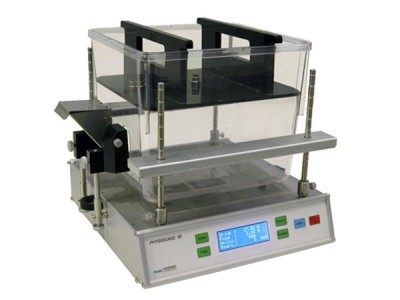Authors
G André-Grégoire, F Dilasser, J Chesné, F Braza, A Magnan, G Loirand, V Sauzeau
Lab
NSERM, CNRS, UNIV Nantes, l'institut du thorax, Nantes, France
Journal
Journal of Allergy and Clinical Immunology
Abstract
Background
The molecular mechanisms responsible for airway smooth muscle cells (aSMCs) contraction and proliferation in airway hyperresponsiveness (AHR) associated with asthma are still largely unknown. The small GTPases of the Rho family (RhoA, Rac1, and Cdc42) play a central role in SMC functions including migration, proliferation, and contraction.
Objective
The objective of this study was to identify the role of Rac1 in aSMC contraction and to investigate its involvement in AHR associated with allergic asthma.
Methods
To define the role of Rac1 in aSMC, ex and in vitro analyses of bronchial reactivity were performed on bronchi from smooth muscle (SM)-specific Rac1 knockout mice and human individuals. In addition, this murine model was exposed to allergens (ovalbumin or house dust mite extract) to decipher in vivo the implication of Rac1 in AHR.
Results
The specific SMC deletion or pharmacological inhibition of Rac1 in mice prevented the bronchoconstrictor response to methacholine. In human bronchi, a similar role of Rac1 was observed during bronchoconstriction. We further demonstrated that Rac1 activation is responsible for bronchoconstrictor-induced increase in intracellular Ca2+ concentration and contraction both in murine and in human bronchial aSMCs, through its association with phospholipase C _2 and the stimulation of inositol 1,4,5-trisphosphate production. In vivo, Rac1 deletion in SMCs or pharmacological Rac1 inhibition by nebulization of NSC23766 prevented AHR in murine models of allergic asthma. Moreover, nebulization of NSC23766 decreased eosinophil and neutrophil populations in bronchoalveolar lavages from mice with asthma.
Conclusions
Our data reveal an unexpected and essential role of Rac1 in the regulation of intracellular Ca2+ and contraction of aSMCs, and the development of AHR. Rac1 thus appears as an attractive therapeutic target in asthma, with a combined beneficial action on both bronchoconstriction and pulmonary inflammation.
BIOSEB Instruments Used
OXYLET, Indirect Calorimeter (OXYLET)
Source :
https://www.sciencedirect.com/science/article/pii/S009167491731761X#!

 Pain - Thermal Allodynia / Hyperalgesia
Pain - Thermal Allodynia / Hyperalgesia Pain - Spontaneous Pain - Postural Deficit
Pain - Spontaneous Pain - Postural Deficit Pain - Mechanical Allodynia / Hyperalgesia
Pain - Mechanical Allodynia / Hyperalgesia Learning/Memory - Attention - Addiction
Learning/Memory - Attention - Addiction Physiology & Respiratory Research
Physiology & Respiratory Research











![Dynamic Weight Bearing 2.0 – Postural Module [Add-on]](https://bioseb.com/733-home_default/dynamic-weight-bearing-20-add-on-postural-module.jpg)
























 Pain
Pain Central Nervous System (CNS)
Central Nervous System (CNS) Neurodegeneration
Neurodegeneration Sensory system
Sensory system Motor control
Motor control Mood Disorders
Mood Disorders Other disorders
Other disorders Muscular system
Muscular system Joints
Joints Metabolism
Metabolism Cross-disciplinary subjects
Cross-disciplinary subjects CONFERENCES & MEETINGS
CONFERENCES & MEETINGS 